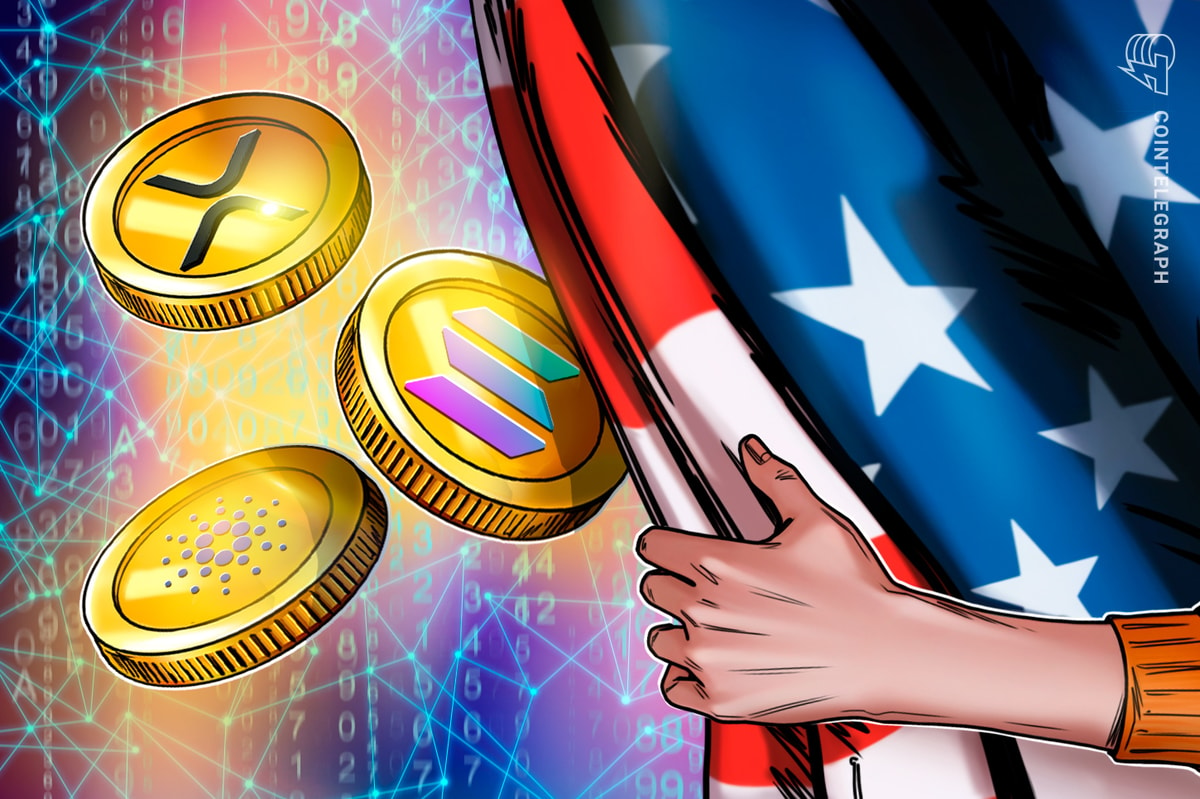The US crypto industry finally got what it wanted when President Donald Trump announced plans to form a national crypto reserve on March 2. But instea
The US crypto industry finally got what it wanted when President Donald Trump announced plans to form a national crypto reserve on March 2. But instead of celebration, the decision sparked backlash — not from the usual suspects in traditional finance or regulators but from within the crypto world itself.
The controversy arises from the selection of assets in the reserve. During his election campaign, Trump pledged to create a “national Bitcoin stockpile,” making the inclusion of Bitcoin (BTC) — and, to some extent, Ether (ETH) — expected. However, the addition of XRP (XRP), Solana (SOL) and Cardano (ADA) has divided the industry.
These three assets carry baggage, ranging from centralization concerns to doubts about real-world adoption. Proponents highlight their technological advancements and market potential, but skeptics argue they lack the stability, institutional trust and global acceptance needed for a national reserve.
Gemini co-founder Cameron Winklevoss was among those surprised by Trump’s decision. Source: Cameron Winklevoss
The excitement surrounding the announcement was short-lived. All five cryptocurrencies initially spiked in price but soon dropped to pre-announcement levels before recovering slightly at the time of writing. XRP and ADA stand out as exceptions, as they didn’t fall below their pre-announcement levels, though they also weren’t immune to severe volatility swings.
Each of the three selected altcoins brings something different to the table. Let’s break down why they might have been chosen, and why their inclusion is controversial.
Solana is fast and cheap but best known for memecoins
Ethereum leads in total value locked (TVL) in decentralized finance (DeFi), accounting for approximately 52% of the market with $50.59 billion, according to DefiLlama. This figure excludes its layer-2 networks, such as Base and Arbitrum, which serve as scaling solutions built atop Ethereum and remain part of its broader ecosystem.
Solana follows at a distant second with $7.32 billion in DeFi TVL. The network has long been labeled an “Ethereum killer,” a term used for blockchains aiming to challenge Ethereum’s dominance. Throughout 2024 and early 2025, Solana appeared to be gaining ground thanks to its high throughput, capable of handling thousands of transactions per second.
Meanwhile, developers have largely resolved its once-chronic outage issues, allowing the network to capitalize on the mass traffic brought on by the memecoin boom.
Solana is second in the industry in DeFi TVL but still a long way from Ethereum. Source: DefiLlama
Fund managers applied for SOL-based exchange-traded funds (ETFs), and the network became a preferred platform for political figures launching or endorsing cryptocurrency projects — primarily through memecoins.
Recently, Solana’s memecoin boom turned chaotic. Sensationalized livestreaming events designed to pump token prices alongside widespread scams, rug pulls and bot-driven trading have raised concerns about the sector’s sustainability. The number of new token launches on Solana continues to decline as skepticism grows.
Influential voices have raised their concerns about Solana’s venture capital influence. National Security Agency whistleblower Edward Snowden called out Solana’s reliance on venture capital in November, suggesting it compromises the network’s decentralization. He described Solana as “born in prison,” implying that its dependence on VC funding could limit its autonomy and alignment with blockchain’s foundational principles.
Related: Is crypto’s ‘Trump effect’ short-lived?
“These assets, like any other tokens, don’t function as true reserve assets. Adding them to a US crypto reserve would be as arbitrary as including Nvidia stock in a strategic reserve,” Georgii Verbitskii, founder of TYMIO, told Cointelegraph.
“While sovereign wealth funds, like Norway’s, invest in equities for long-term returns, their purpose is different from that of a national reserve, which should be built on universally recognized, decentralized assets. Bitcoin is the only logical choice for such a reserve,” he added.
Slow and steady: Cardano still in the race
Cardano has adopted a slow and steady strategy. The network is often bashed for its sluggish rollout of features compared to other major blockchains, but its supporters believe its peer-reviewed, research-driven strategy will ultimately pay off.
So far, however, this measured approach has left Cardano trailing behind in an industry that moves at breakneck speed. Users flock to chains where their funds feel secure or where they see the most profit potential — much like how Solana’s memecoin frenzy attracted mass attention — meaning Cardano has struggled to keep pace.
As of March 5, Cardano’s DeFi ecosystem holds just $412 million in TVL, according to DefiLlama. The network is often mocked as a “ghost chain,” meaning its onchain activity is minimal, which is often met with…
cointelegraph.com
